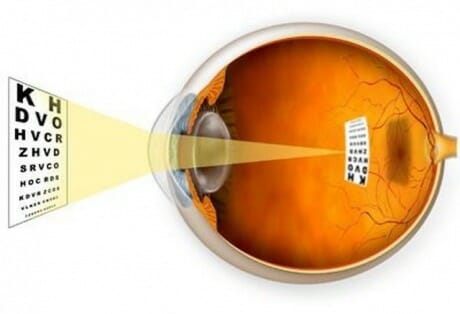Think You’ve Got Myopia? Are You Near-Sighted?

You’ve been diagnosed with myopia or suspect you might have it. You can see perfectly fine up close – especially when reading or looking at the computer – but road signs are a blur, and it’s hard to make out people’s faces from afar lately.
So what should you do? First, read about the following 10 things you probably didn’t know about myopia, so you can talk with an optometrist about finding a solution that makes near-perfect eyesight a reality for you.
Myopia Is Just Another Name for Nearsightedness
Myopia can sound rather clinical and serious. But it’s just another way to say that you have the common eye condition of being nearsighted, or that you can’t clearly see things that are far away. Myopia should be addressed if you drive, and so that you can enjoy a good quality of life, but it’s typically not anything that poses great risks to eye health.
Myopia Is Common and It’s Rising in Prevalence
A study conducted by the National Eye Institute (NEI) shows that the number of people in the United States who have myopia (aged 12 to 54) grew from 25% in 1972 to 41.6 percent in 2004. The exact reason for the jump is unknown. But it’s expected that an increase in extended close-up vision tasks, frequent computer viewing, and genetic predisposition to myopia is involved.
Eye Strain and Headaches Are Commons Signs of Myopia
If you experience eyestrain, headaches, and even frequent squinting, you may have myopia and therefore should consider correcting your vision. Even if you don’t care about seeing distant objects, treating this condition can help you live more comfortably and pain-free.
Fatigue Could Be Associated With Myopia
Many people who play sports or those are out and about often get extremely tired and they don’t know why. There are many factors, of course, that can lead to extreme fatigue. But diagnosing and correcting myopia might be all it takes. Eyes that have to work hard to focus may be causing the body to work harder, too.
Myopia Can Be Caused by Irregularly Shaped Eyeballs
Eyeballs that are too long (relative to the eye’s lens and the cornea’s focusing power) cause rays of light to focus in front of the retina, instead of on the surface, where they should, and this can cause nearsightedness. Also, myopia occurs when the lens, the cornea, or both are curved too much in proportion to the length of the eyeball.
Myopia Is Often Self-Correcting
Myopia usually begins in childhood and can disappear as one grows into an adult. Sometimes, however, it actually progresses with age. If you suspect you have myopia or have already been diagnosed with it, talk with an optometrist to see what corrective treatments might be necessary.
You May Just Need Glass or Contact Lenses to Correct Myopia
While severe cases of myopia sometimes call for refractive surgery, often it simply takes a pair of glasses or contact lenses to let you enjoy clear and perfect vision. You might only need to wear glasses or contact lenses for certain occasions, such as driving, watching a movie, or viewing a presentation.
Refractive Surgery Can Permanently Correct Myopia
Refractive surgery options for correcting myopia include LASIK and PRK. Each of these options involves different methods of manipulating corneal tissue, but both result in treatment of the disorder in most cases.
Orthokeratology Is a Treatment Option
Another option to correct myopia is a non-surgical procedure called orthokeratology. With this treatment, patients wear special contact lenses that are rigid and gas permeable. The lenses reshape the cornea while the wearer sleeps.
Myopia Can Sometimes Be Controlled
Since more people than ever are being diagnosed with myopia, research is focusing on how to control its progression. Possible solutions include bi-focal and contact lens use in children, photodynamic therapy (a combination of drug and laser procedures), and oral medicines.
If you want to find out more about myopia and how you can enjoy good vision, and you’re in the Portland, Ore. area, then be sure contact our office for a consultation with an optometrist.
[Photo Via: LucianaFrizon]

